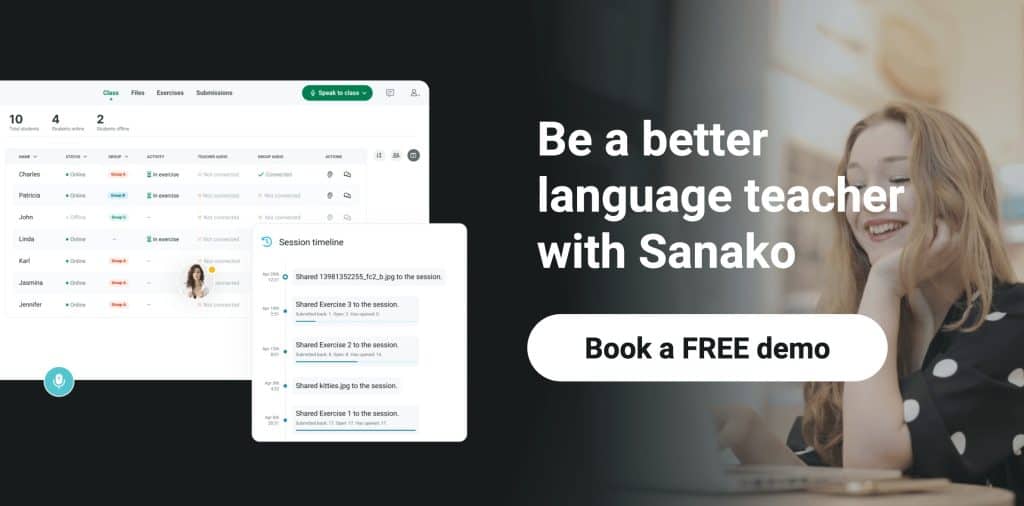English is the official language of more than 50 countries across the globe and is recognised as the international language of aviation, business, diplomacy, and science. Yet it’s also recognised as a notoriously difficult language to learn.
Nonetheless many international students still seek to learn English to advance their careers or to broaden their experiences and opportunities. Students typically fall into one of two categories – they are learning English either as a second (ESL) or as a foreign language (EFL). But as this blog post illustrates there are significant differences between ESL and EFL learners. The post also highlights how teachers should tailor their lessons and teaching methods to best support the diverse learners in their classes.
Learning ESL vs Learning EFL
Perhaps the easiest way to appreciate the difference between ESL and EFL is to consider where the student is learning English.
If they’re learning English in a country where English is the native language and is spoken by everyone outside of the classroom, it is then a “second” language and would therefore be referred to as ESL. The learner here is principally learning English to understand and speak it outside the classroom.
The situation is different if they’re learning English in a country where the native language is not English. Students are learning to speak, write and read English as a ‘foreign’ language, so this would be referred to as EFL. In this instance, the learner learns English inside a classroom, but continues to speak her/his own language when outside of the classroom.
Different classroom environments
Another way of looking at the difference between the two different ways of English language learning is to compare an ESL with an EFL classroom. As you can see below they are very different, so it’s important that teachers understand the environment that they are teaching in, the needs and motivations of their students and develop an appropriate pedagogical approach.
The ESL classroom is typically filled with students who are immigrants or visitors to an English-speaking country. Classes tend to be full of students from different countries and cultures, who speak a wide variety of different languages. Outside the classroom, students have a wide range of practical needs for English (e.g a job, travel, relationships etc), and lots of opportunity to use it (e.g in a restaurant, shopping, leisure activities). Students, therefore, have extensive daily exposure to English culture and to native English speakers. Students are motivated to learn and fit in – they also have what Irie (2003) calls instrumental motivation. This stems from their desire to learn English to improve their lives by getting a better job or passing an exam.
On the other hand, the EFL classroom is typically populated with students who speak the same language and share a national culture. As a result, their teacher could be the only native English speaker that they have regular exposure to. Invariably, students have very few opportunities to use their English skills in their everyday lives and their exposure to English is often restricted to cultural forms including film, music or TV. Intrinsic learner motivation in EFL settings can therefore often be low since English doesn’t form part of their daily lives and it may just be required learning for a test or a qualification.
How to most effectively teach ESL and EFL students?
It is clear from the above that there are significant differences in location, culture and student population in ESL and EFL classrooms. It is essential that educators respond to these differences and tailor their lessons accordingly. Some broad considerations follow below for teachers to use in both settings.
ESL teachers should focus on the following in their teaching
1. Support their immediate needs and requirements:
With a class full of students from different backgrounds, they’ll have a multitude of questions and problems to handle, so use these situations as a context for delivering your learning objectives. If students need to fill out forms, for example, help them build the vocabulary and written English skills to do so.
2. Bring their new home to life:
Help your students to quickly understand the cultural norms in your part of the UK, the US or Canada. What matters to local people? How should they behave when out in town? What do they need to know or look out for? Not only will this help them quickly assimilate, it will also generate discussion and build cultural awareness. Both are key steps on the path to fluency.
3. Fill knowledge gaps:
Some students may have been to your country before, others may not. Some students will have knowledge/information that others do not. Information gap activities (e.g Q+As, group discussions) can be a great way to get all students quickly up to speed.
The same is also true of the countries where your students come from, so don’t forget to encourage students to talk in English about their own cultures, their passions and motivations!
4. Task-based problem-solving activities:
These can be hugely useful for ESL classes as they require students to find a solution entirely in English. In the classroom, teachers can use these to focus on the accuracy of students’ grammar and language. Students can also be sent out to find items on a treasure hunt or to engage with native speakers to extract specific information/insights.
EFL teachers should focus on the following in their lessons
1. Focus on fluency:
Given that students are probably not receiving any significant exposure to English outside of the classroom, EFL students need lots of practice in using English, especially orally. Lessons should seek to maximize fluency in communication – accuracy is typically less important, certainly at the beginning of every course. Getting them involved, demonstrating progress and building motivation are all key stages!
2. It’s not all about Shakespeare!
Linked to the above, always try to focus on real English. English that’s actually spoken by real people living in 2023. The language is constantly changing and adapting – it’s not all about lists of rules and vocab to be memorized.
Modern English reflects different cultures and communities from all around the world – so bring that to life in your lessons. Use a wide variety of teaching materials, social media, field trips, film, TV, music to make the language come alive. One word of caution – activities that lack structure or which fail to generate student interest inevitably lead most students to abandon English or to resort to their native language.
3. Build motivation:
Make learning English real and relevant for your students. Give them a reason to persist with their studies. Learning English can be very theoretical, so find out about your student’s passions and tie English lessons into them. From art to architecture, from fashion to football, there’s no shortage of inspiration to call upon. And, of course, don’t forget there’s bound to be an online fan community for students to access and engage with.
Conclusion
When thinking about how to respond to these challenges, teachers are not alone and tools do exist to help and support them. Sanako’s Connect solution, for example, is particularly helpful at supporting teachers to create and assign exercises for language learning as well as for sharing files, materials and providing feedback. Given the focus outlined above to provide opportunities for both EFL and ESL students to frequently practice and immerse themselves in the language, this blog post usefully explains how Connect powerfully supports students to develop their core language skills and build language fluency. We highly recommend that you take a look at this additional resource to learn more.
If you’d like to find out more about how Sanako’s suite of language teaching software can help EFL and ESL language teachers to build learners’ core skills, please contact us now to arrange your free demo!
This blog post was last updated 15 June, 2023.

